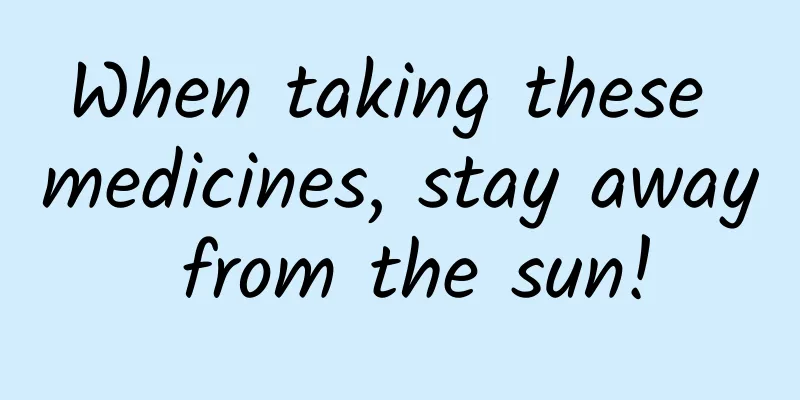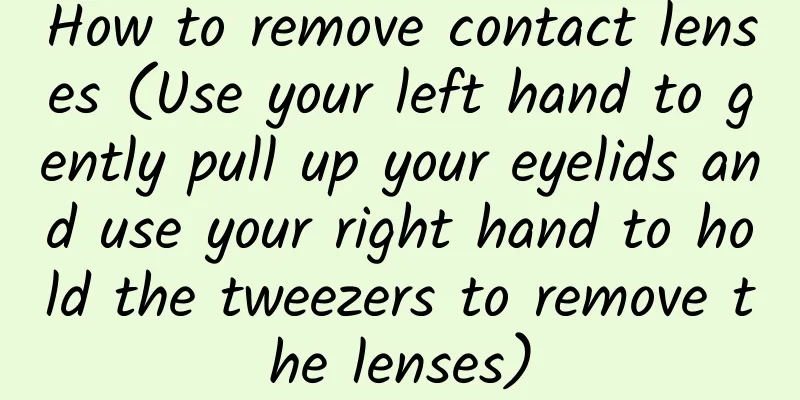When taking these medicines, stay away from the sun!

|
Short story Xiao Li went to the dermatology department for acne. The doctor prescribed tretinoin ointment and mupirocin ointment, and asked him to use tretinoin ointment before going to bed at night and mupirocin ointment during the day. Xiao Li forgot the doctor's instructions and used tretinoin ointment during the day. After sun exposure, the treated area developed erythema and itching. Many drugs do not cause harm to the skin, but under the action of ultraviolet rays, these drugs that penetrate into the skin protein will undergo chemical reactions, causing skin allergies. This allergic symptom caused by taking the drug is medically called drug phototoxicity, that is, "allergy to sunlight." Which drugs can cause phototoxic reactions ? After using the following drugs, you should avoid sunlight, especially when the ultraviolet rays are strong, to avoid phototoxic reactions. Tetracyclines (especially doxycycline) Thiazides (eg, diuretics - hydrochlorothiazide) Sulfonamide antibiotics (eg, sulfamethoxazole) Fluoroquinolones (such as levofloxacin, moxifloxacin, etc.) Nonsteroidal anti-inflammatory drugs (NSAIDs), particularly piroxicam and ketoprofen Phenothiazines (eg, chlorpromazine, promethazine) ●Psoralen (the main active ingredient of the traditional Chinese medicine Psoralea corylifolia) Griseofulvin (antifungal drug) Voriconazole (antifungal drug) ●Aminolevulinic acid and methylaminovaleric acid ester (photosensitizers, mainly used in photochemotherapy) ●Porfimer sodium (a photochemotherapeutic drug, clinically used mainly to treat lung cancer, esophageal cancer, and recurrent superficial papillary bladder cancer) ● Retinoids (mainly used to treat acne) ● St. John’s wort (used in Western countries to treat depression) Antimicrobial agents (eg, thiochlorophene, chlorhexidine, hexachlorophene, fenticrol) Quinidine (antiarrhythmic drug) Quinine (antimalarial drug) ●Amiodarone (an antiarrhythmic drug, which may cause skin pigmentation if frequently exposed to ultraviolet light after taking it) In addition, some common substances in work and life may also cause phototoxic reactions. Sunscreens (eg, benzophenones, cinnamate salts, dibenzoylmethanes) Tar compounds Fragrances (eg, 6-methylcoumarin, sunflower seed musk, sandalwood oil) Most phototoxic drugs are activated by ultraviolet light rather than visible light. Aminolevulinic acid, methyl aminovaleron, and porfimer sodium are activated by visible light. A special type of phototoxic reaction can occur after exposure to tar compounds. Tar phototoxicity occurs mainly in road workers and roofers who use tar in their work and occasionally in individuals who use shampoo containing tar. The burning and stinging sensation called "tar sting" can occur within minutes of exposure to sunlight. In addition, attention should be paid to phytophotodermatitis. Local exposure to plant-derived substances can also cause phototoxic reactions, which is called phytophotodermatitis. The most common plants that cause phytophotodermatitis are from the Apiaceae and Rutaceae families. Common plants include celery, wild parsnip, and parsley (Apiaceae), and lemons and limes (Rutaceae). The sap of the fig tree and the seeds of the psoralea corylifolia plant can also induce phytophotodermatitis. Life Tips *After using drugs that may cause photosensitivity reactions, it is recommended to avoid sunlight and take sun protection measures if necessary. * Bartenders, chefs, gardeners and other people who need to frequently come into contact with photosensitive substances such as limes, celery, and weeds are advised to wear sunscreen on a daily basis and clean their skin in time after contact with substances that may cause photosensitivity reactions. Family medicine box For mild photosensitivity reactions, you can take the anti-allergic drug loratadine tablets orally, 1 tablet (10 mg) once a day; for topical use, apply mometasone furoate cream in an appropriate amount to the affected area, once a day. Author: Liu Yanping, Chen Ye Original title: "You may be allergic to sunlight after taking these drugs" |
Recommend
When summer comes and you have a stuffy nose and sneezing, how do you tell whether it is a cold or a pollen allergy?
In spring, flowers are in full bloom, and pollen ...
The correct way to enjoy the "autumn coolness": first grasp the "personality" of Bailu
Bailu is the fifteenth solar term in the twenty-f...
Various types of ginger in traditional Chinese medicine
"Ginger" is a common ingredient in our ...
Menopause symptoms and treatment
I believe many people know that as people age, th...
How can someone dare to say “I know this” when I made it up?!
If you are a loyal fan of Guokr and love psycholo...
How to reduce the swelling of tonsils 3 degrees
From the clinical symptoms, the third degree of t...
What are the symptoms of anemia in pregnant women?
Pregnant women should pay close attention to thei...
Breast hypoplasia in girls
We all know that, under normal circumstances, aft...
Menstrual flow is too little or almost nothing
When women have less menstrual flow, it will caus...
Female hair transplant
With the continuous development of hairdressing t...
Height and weight standard for 16-year-old girls
Nowadays, the living standards of most families h...
What are the symptoms of low estrogen after childbirth?
Compared with men, women usually have higher leve...
What should a girl do if her menstruation is abnormal?
When girls first start menstruating, there will b...
The secrets of kidney care revealed! A must-have dietary guide for kidney disease patients!
A proper diet can reduce the burden on the kidney...
Can I have surgery while pregnant?
Pregnancy is a special period for women. They nee...









